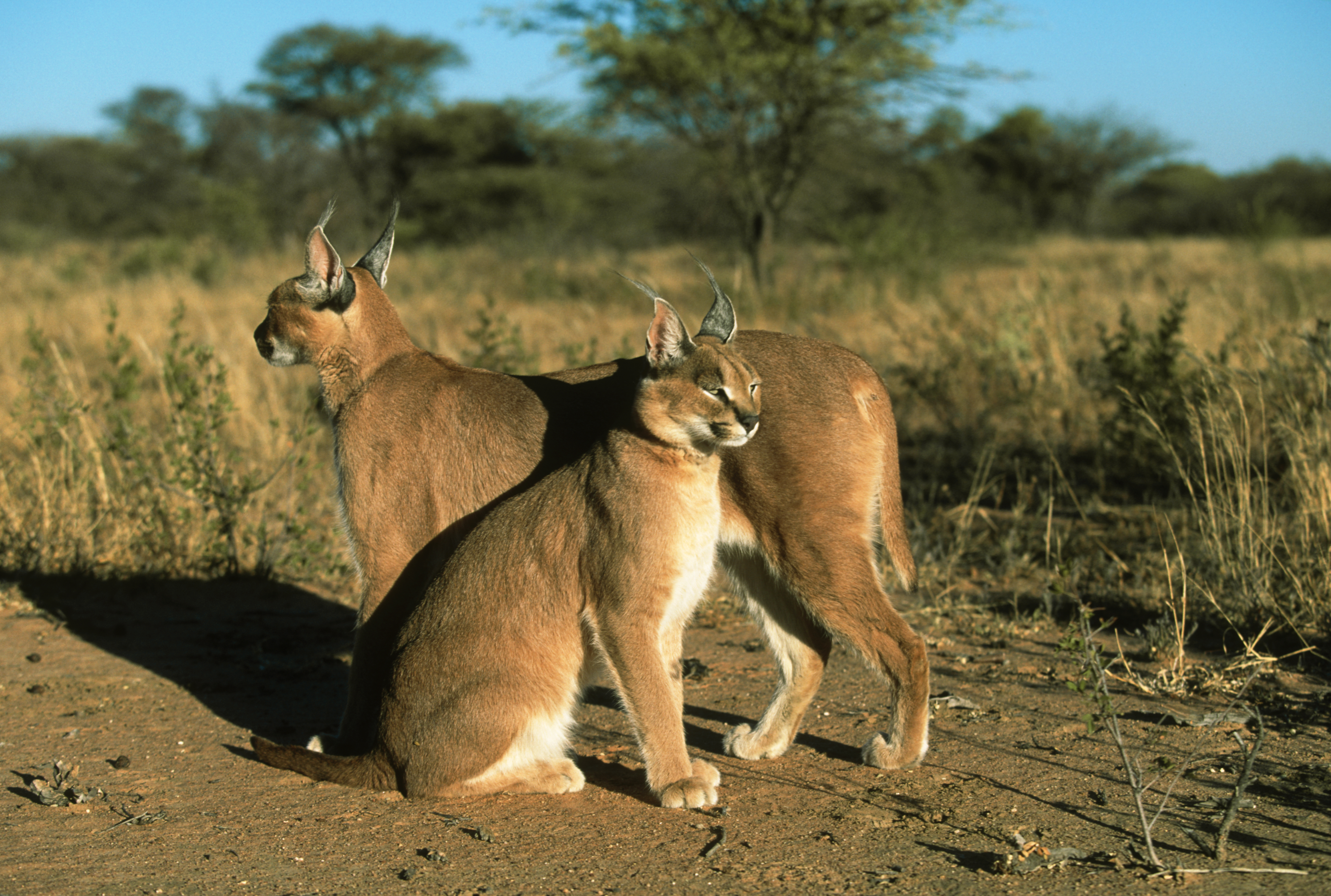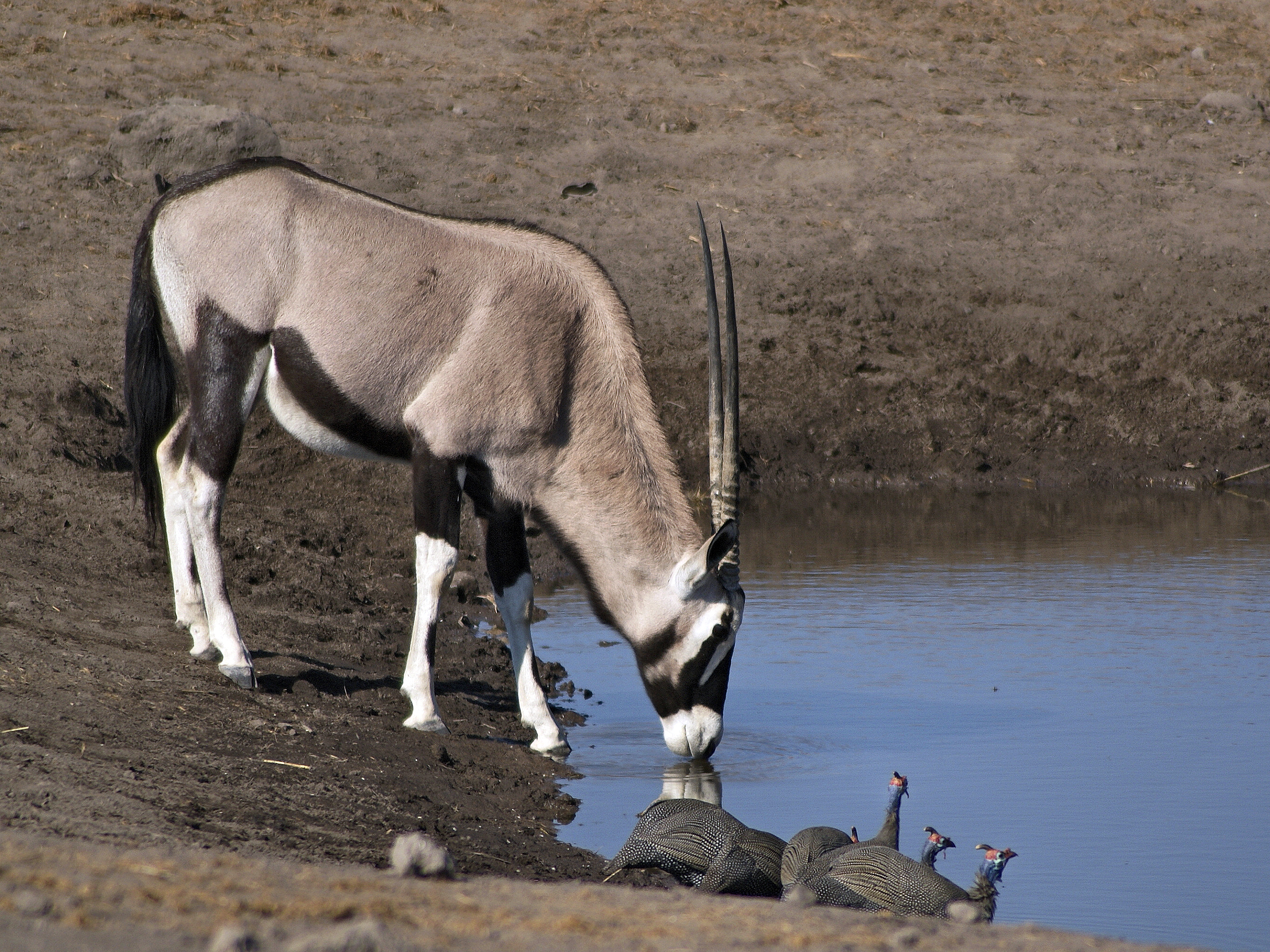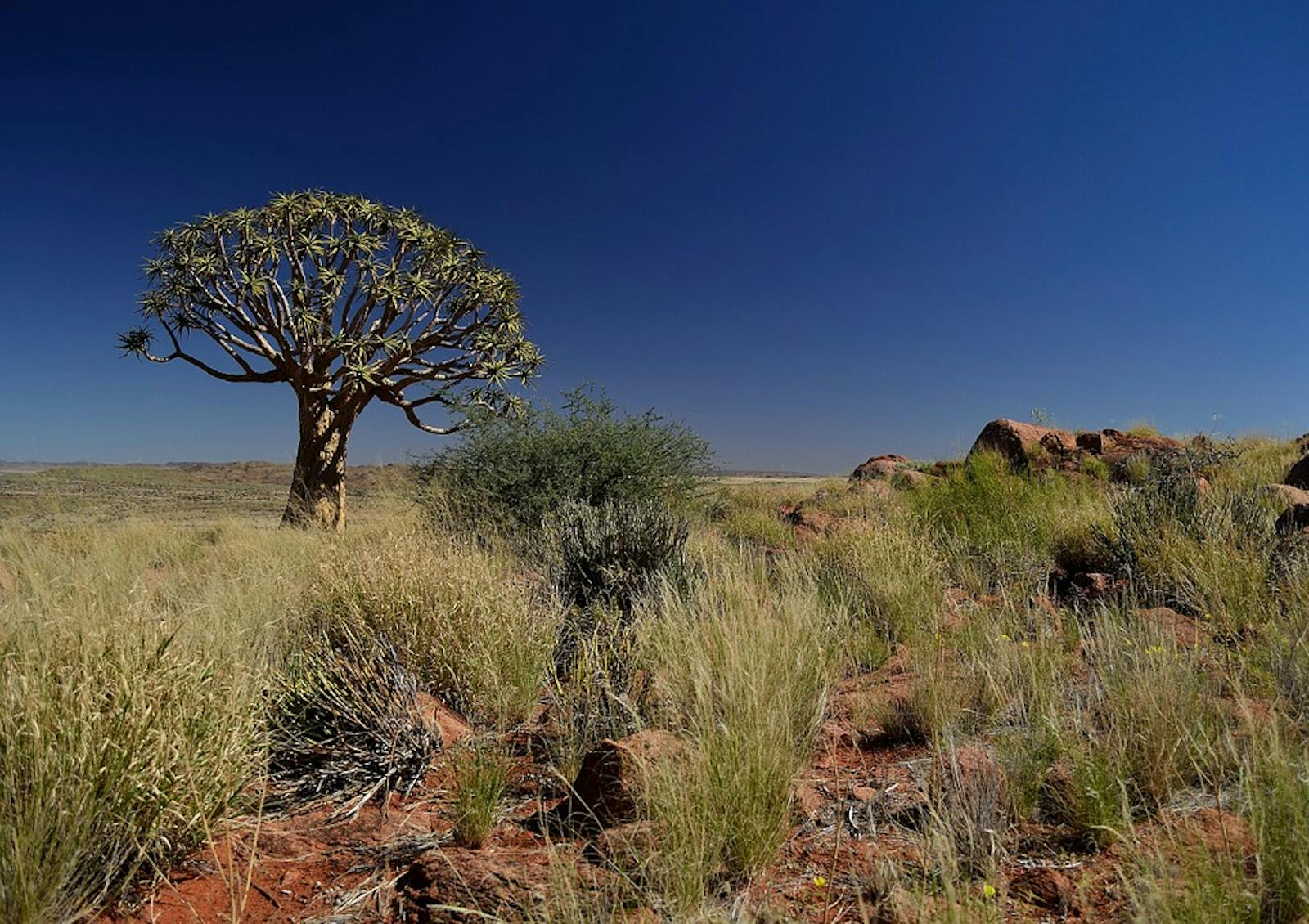Kalahari Xeric Savanna
The ecoregion’s land area is provided in units of 1,000 hectares. The conservation target is the Global Safety Net (GSN1) area for the given ecoregion. The protection level indicates the percentage of the GSN goal that is currently protected on a scale of 0-10. N/A means data is not available at this time.
Bioregion: Greater Karoo & Kalahari Drylands (AT9)
Realm: Afrotropics
Ecoregion Size (1000 ha):
68,863
Ecoregion ID:
97
Conservation Target:
52%
Protection Level:
3
States: Botswana, Namibia, South Africa
In the southern Kalahari, temperatures can vary by 45°C in one day—on winter nights temperatures can plummet to -14°C, while during the day soar to 30°C. Many plants and animals have adapted to withstand these severe conditions. The Kalahari lions are a typical example: compared with lions from more mesic areas, they have smaller prides and larger home ranges, often hunting smaller preys. They are also taller at the shoulder, lighter, and many of the males possess black manes.
The ecoregion stretches across northwestern South Africa, southern Botswana and central-southeastern Namibia. Most of it lies on the level plains of the Kalahari Basin, interrupted by long parallel sand dunes in the south. The Kalahari sands themselves are nutrient poor and reddish-brown in colour, except where leached by water.
.jpg)
The flagship species of the Kalahari Xeric Savanna ecoregion is the gemsbok. Image credit: Courtesy of John Hickey-Fry, Flickr
Temperature fluctuations are extreme in this ecoregion. A cold summer night may drop to 5°C, whereas daytime temperatures may exceed 45°C. Rainfall is remarkably patchy and average annual rainfall is highest in the northeast and lowest in the southwest, ranging between 150 and 500 mm. Latitude, high atmospheric pressure, and the barrier created by the Drakensberg Mountains between the Kalahari and the Indian Ocean control the climate. Elevation is also influential, and although the ecoregion occurs at elevations between 600 m and 1,600 m, most lies above 1,000 m.
In less arid areas, the vegetation is open savanna with grasses (Schmidtia spp., Stipagrostis spp., Aristida spp., and Eragrostis spp.); it is Interrupted by trees such as camelthorn, grey camelthorn, false umbrella thorn, blackthorn, shepherd’s tree, and silver cluster-leaf. Shrubs include Grewia flava, Ziziphus mucronata, Tarchonanthus camphoratus, Rhigozum trichotomum, Acacia hebeclada, and Lycium spp. In direr areas, most large trees occur in ancient riverbeds, and the rolling red dunes are sparsely populated by smaller trees, broom bushes, and dune reeds.
The plant species richness per unit area is among the lowest of all the southern African ecoregions, and it is estimated that less than 3% of the plants are endemic. Animal endemism is also low, including such species as the strictly endemic FitzSimon's legless skink and near-endemic Brants's whistling rat. Despite the low rates of endemism, the diversity of large mammals is remarkable for such an oligotrophic and arid system.
Mammals include lion, cheetah, leopard, spotted and brown hyena, and wild dog. There is also a high diversity of smaller predators, including black-footed cat, Cape fox, meerkat, yellow mongoose, aardwolf, caracal, black-backed jackal, and honey badger. The mammals of the Kalahari also show a range of adaptations to the extremes of this arid environment.

Caracals. Image credit: Courtesy of Wildscreen Exchange
Gemsbok, a large antelope of striking appearance with long, spearlike horns, are highly adapted to arid areas. The impressive communal nests of the sociable weaver are up to 6 m long and 2 m high and weigh as much as 1,000 kg with 300 individual birds. They are so well insulated that they substantially buffer the temperature extremes of the outside air.
The avifauna is not especially rich but includes many species of raptors, including the secretary bird, martial eagle, bateleur, and Verreaux’s eagle owl. As in many arid areas, the amphibian fauna is not particularly species rich, but does include Tschudi's African bullfrog that eats small birds, rodents, reptiles, and insects.
The largest reserve in the ecoregion is the Central Kalahari (although not all of this reserve is within the ecoregion) and adjoining Khutse Game Reserves in Botswana. The Kgalagadi Transfrontier Park was proclaimed in 1931 and is the official union of the former Kalahari Gemsbok National Park in South Africa and the Gembsok National Park in Botswana. Common strategies for both conservation management and tourism development can now be shared across the border. There are also many communal conservancies including the Ovitoto, Otjombinde, Ozonahi, African wild dog conservancies in Namibia.
While fire is a natural ecological process, over the last few centuries the mismanagement of fire regimes have contributed to habitat degradation, lowered species richness, reduced nutrient availability, and adversely affected plant and animal communities. The erection of fences (farm, veterinary, and border) have been primarily responsible for the precipitous decline in numbers of species such as blue wildebeest and hartebeest in the Kalahari since the 1960s.

Gemsbok. Image credit: Creative Commons
Animals like the blue wildebeest and hartebeest, not truly adapted to aridity, must migrate to obtain food and water. During migration some animals become caught in the fences, while others die through thirst and starvation. Artificial waterholes have been established to compensate for the loss of access to natural water sources, however, many have very poor water quality and contribute to the decline in wildlife.
Livestock farmers often use poisoned carcasses to kill “problem” animals such as black-backed jackals and caracals, resulting in the poisoning of non-target raptors. Some species, like the martial and black eagles, perceived to prey on domestic livestock and poultry, may be intentionally targeted. Additionally, there have been significant increases in temperature, as well a decrease in rainfall over the past 20–50 years.
The priority conservation actions for the next decade will be to: 1) increase the number of weather stations as well as maintain current stations to effectively monitor the impacts of climate change; 2) implement borehole management interventions, for example the desalination of water, pursue alternative water sources, and remove sources that are of extremely poor quality; and 3) reassess the need for veterinary fences and where possible, remove them.
Citations
1. Burgess, N., Hales, J.A., Underwood, E., Dinerstein, E., Olson, D., Itoua, I., Schipper, J., Ricketts, T. and Newman, K. 2004. Terrestrial ecoregions of Africa and Madagascar: a conservation assessment. Island Press.
2. van Wilgen, N.J., Goodall, V., Holness, S., Chown, S.L. and McGeoch, M.A. 2016. Rising temperatures and changing rainfall patterns in South Africa's national parks. International Journal of Climatology. 36(2), pp.706-721.
3. Selebatso, M., Maude, G. and Fynn, R.W. 2018. Assessment of quality of water provided for wildlife in the Central Kalahari Game Reserve, Botswana. Physics and Chemistry of the Earth, Parts A/B/C. 105, pp. 191-195.
4. Dougill, A.J., Akanyang, L., Perkins, J.S., Eckardt, F.D., Stringer, L.C., Favretto, N., Atlhopheng, J. and Mulale, K. 2016. Land use, rangeland degradation and ecological changes in the southern Kalahari, Botswana. African journal of ecology. 54(1), pp.59-67.




